El Escorial
At the centre of autocratic power
Detail
Date of first edition: 1617
Date of this edition: ca. 1617
Dimensions (not including margins): 36,5 x 47,2 cm
Dimensions (including margins): 42,6 X 56 cm
Condition: Mint. Sharp copper engraving printed on paper. Superb original colouring. Wide margins.
Condition rating: A+
Map reference: Taschen, Br. Hog. p. 438
From: Civitatis Urbis Terrarum (VI: Theatri praecipuarum Totius Mundi Urbium Liber Sextus Anno MDCXVII), first published 1617
In stock
El Escorial by Braun Hogenberg
This bird’s eye view was published in the sixth and final part of the Braun and Hogenberg atlas of 1617 and it is virtually identical the originally sight of Ortelius dated 1591. Ortelius’ copperplate engraved by Pierre Perret can still be admired at the Plantin Museum in Antwerp. The small (identically named) town lies in the background. At the bottom of the print a poem is dedicated by Michael Vargas to Philip II. Johannes Blaeu would later incorporate a nearly identical print in his Altas Maior, but with the royal cortege in the forecourt.
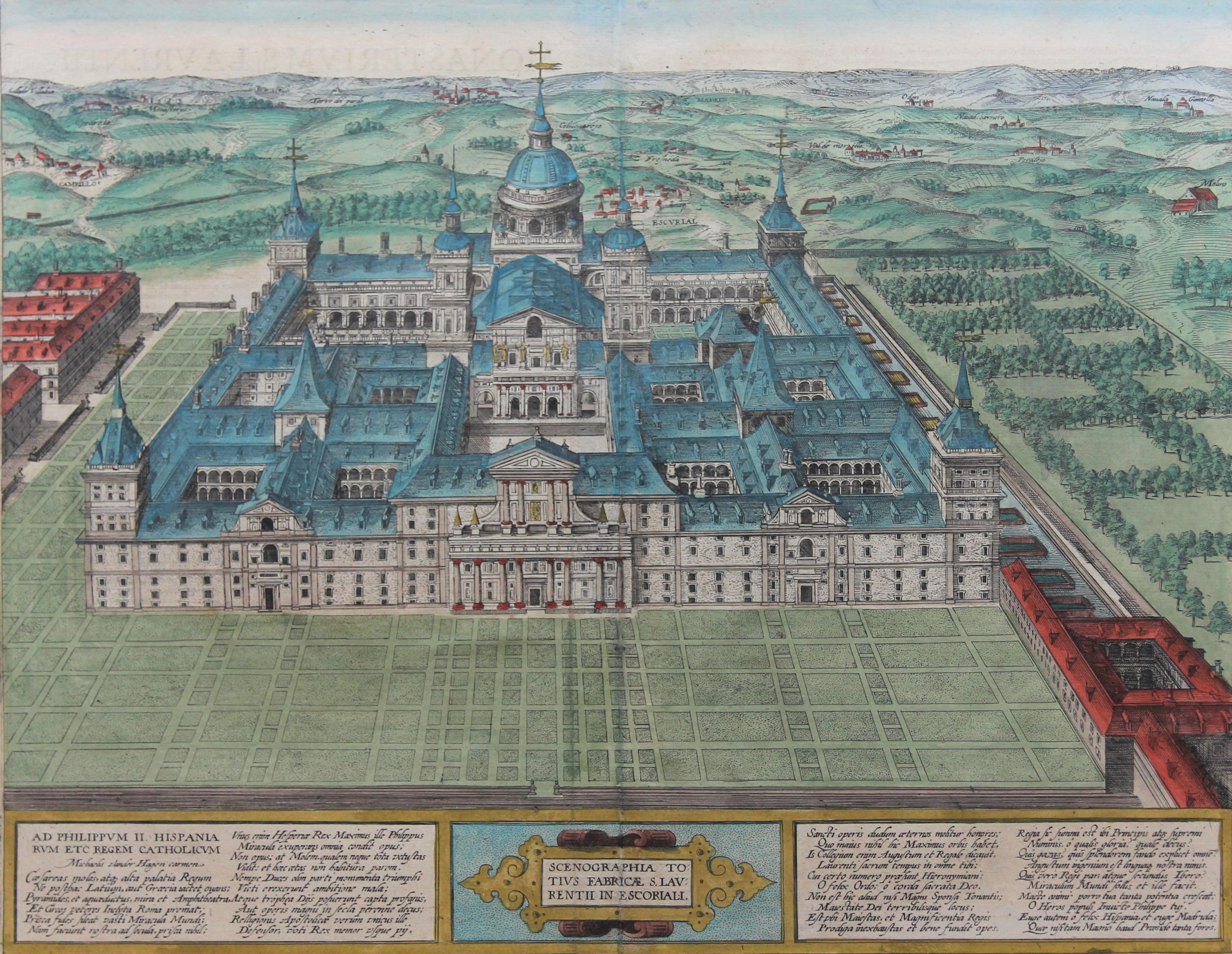
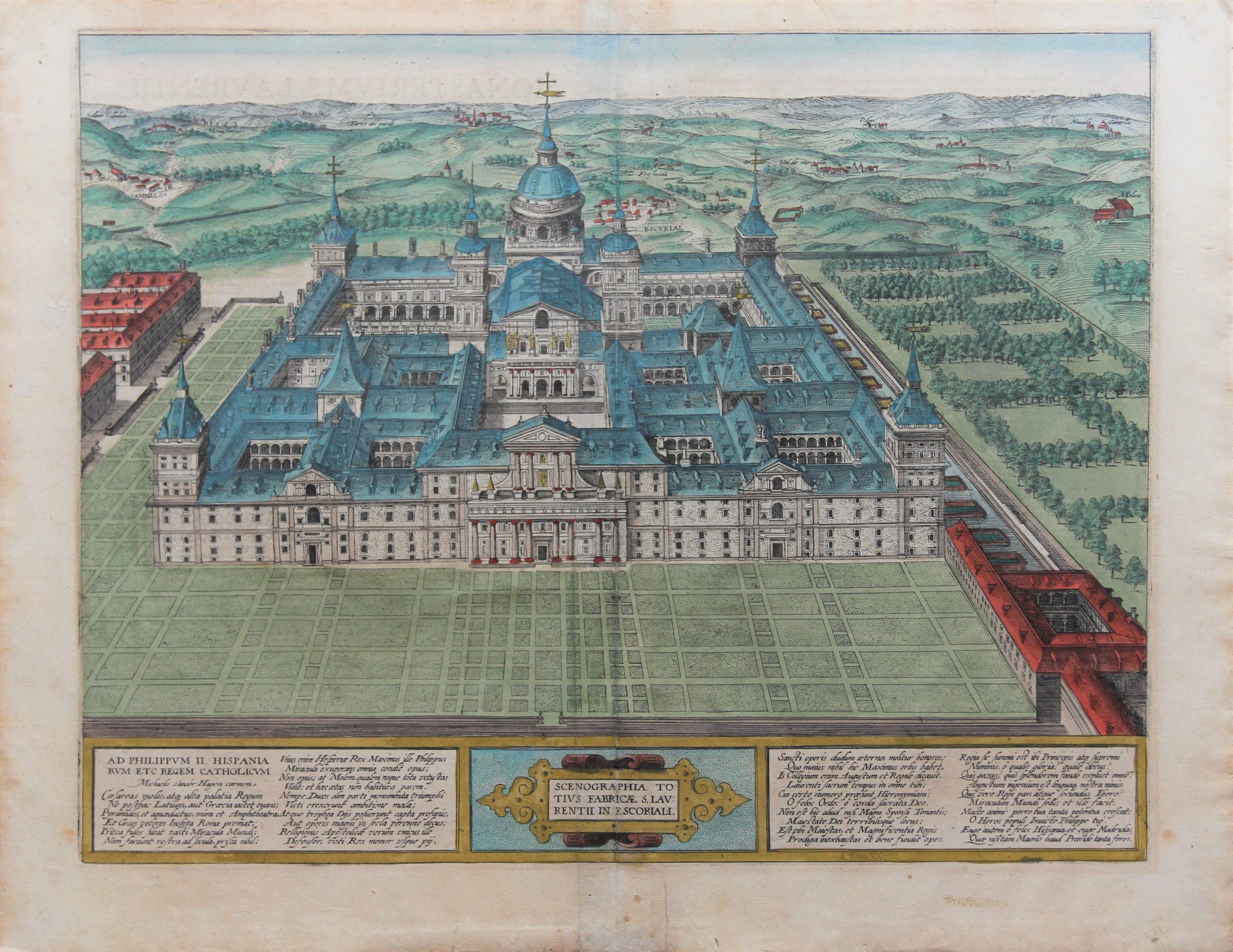
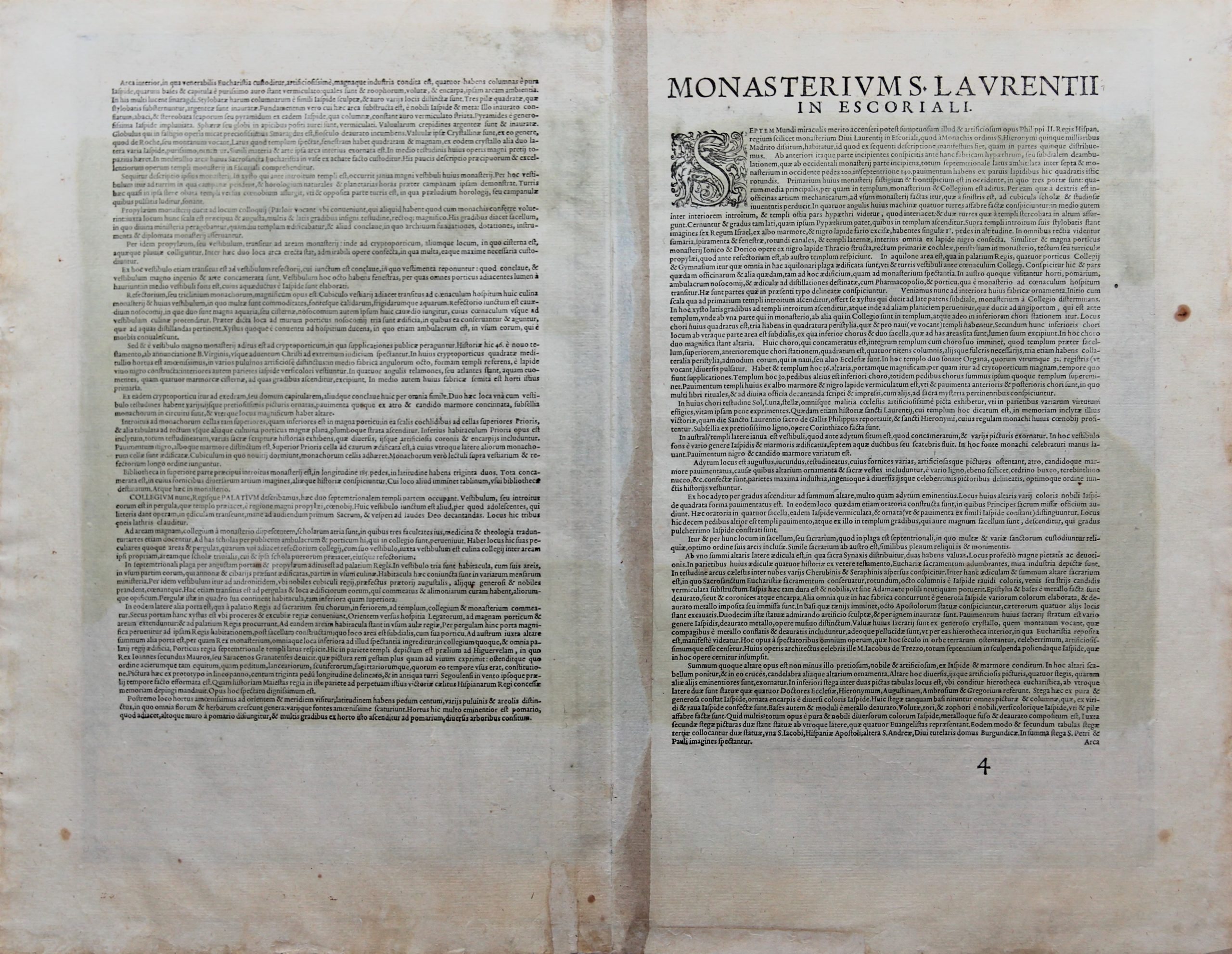
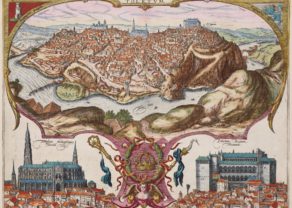
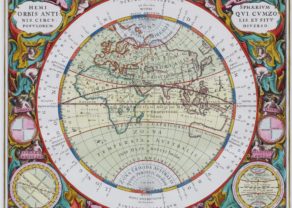
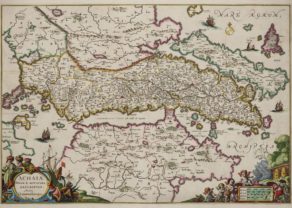
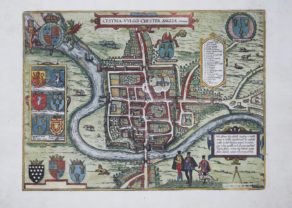
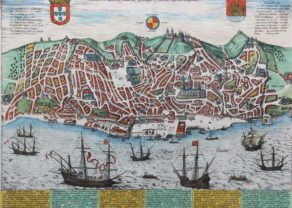
The El Escorial: an all-in-one
Officially, this building is called El Monasterio de San Lorenzo de El Escorial so named after the patron saint whose feast day takes place on August 10, Saint Lawrence. On this day in 1557 king Philip II defeated the French at the battle of Saint Quentin. In gratitude for the military victory he started constructing in 1563 a monumental multi-functional palace-convent, with more than 4.000 rooms, about 45 km northwest of Madrid. Besides an abbey (on the right), this historic residence (until 1861) of the Spanish kings contains a museum and library (left and behind the Basilica of San Lorenzo el Real).
The main features of its design are the impressive horizontal lines, consisting of sober granite blocks. This new religious style for monasteries influenced Spanish architecture for over a century under the name of “Herrerian style”. Juan de Herrera, the architect, also designed the Plaza Mayor in Madrid. He finished the building around 1584. Apparently, it was modeled on the description by Falvius Josephus of the Temple of Solomon. Philip II also wished to incorporate a mausoleum to honor his father, Charles V. And so, the El Escorial also became the burial place for all Spanish kings of the houses of Habsburg and Bourbon of Charles I (also known as Charles V in the Netherlands) to the present day. Only Philip V and Ferdinand VI have been buried elsewhere. The building breathes the victorious Counter Reformation.
One of its corridors contains frescoes glorifying Spanish military victories over the Moors and the French. In one of the grand chambers one can admire the entire first world atlas by Ortelius; per single map framed, unfortunately in bad condition.